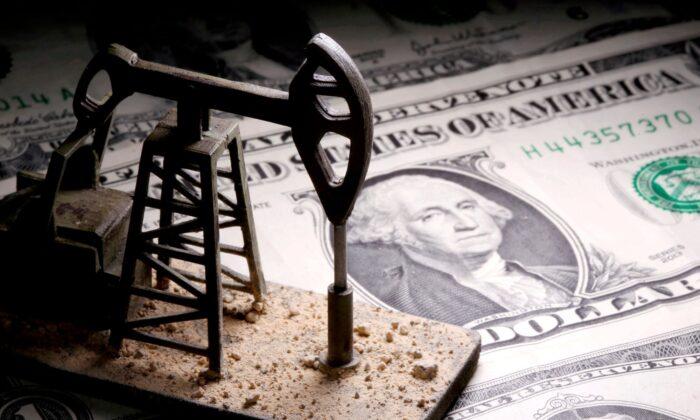LONDON—Oil dropped for a second day on Friday and was heading for a weekly decline, as a UK interest rate hike added to concern over economic growth that outweighed lower U.S. crude stocks and other signs of tighter supplies.
Both crude benchmarks had dropped about $3 on Thursday after the Bank of England raised interest rates by a bigger-than-expected half a percentage point. Central banks in Norway and Switzerland also hiked rates.
Brent crude slipped $1.21, or 1.6 percent, to $72.93 a barrel at 0810 GMT, while U.S. West Texas Intermediate (WTI) crude was down $1.31, or 1.9 percent, at $68.20.
“After yesterday’s central banks’ action, anxiety has palpably grown,” said Tamas Varga of oil broker PVM.
“Due to strengthening economic headwinds caused by recession fears, only conspicuous stock depletion will herald a protracted change in the currently ominous outlook.”
Higher interest rates increase borrowing costs for businesses and consumers, which could slow economic growth and cloud the oil demand outlook for the rest of the year.
The prospect of more U.S. interest rate hikes added to those headwinds. U.S. Federal Reserve Chair Jerome Powell said this week two more rate hikes of 25 basis points each by the end of the year was “a pretty good guess.”
An increase in the dollar, drawing support from hawkish comments from global central banks, also weighed. A strong dollar makes oil more expensive for other currency holders and can hit demand and indicate higher risk aversion among investors.
The recession and demand concerns outweighed signs of supply-side tightness. This week’s U.S. inventory report showed crude stocks posted a surprise decline of 3.8 million barrels.
Also set to tighten the market is Saudi Arabia’s production cut of 1 million barrels per day in July announced as part of an OPEC+ deal to limit supplies into 2024.





